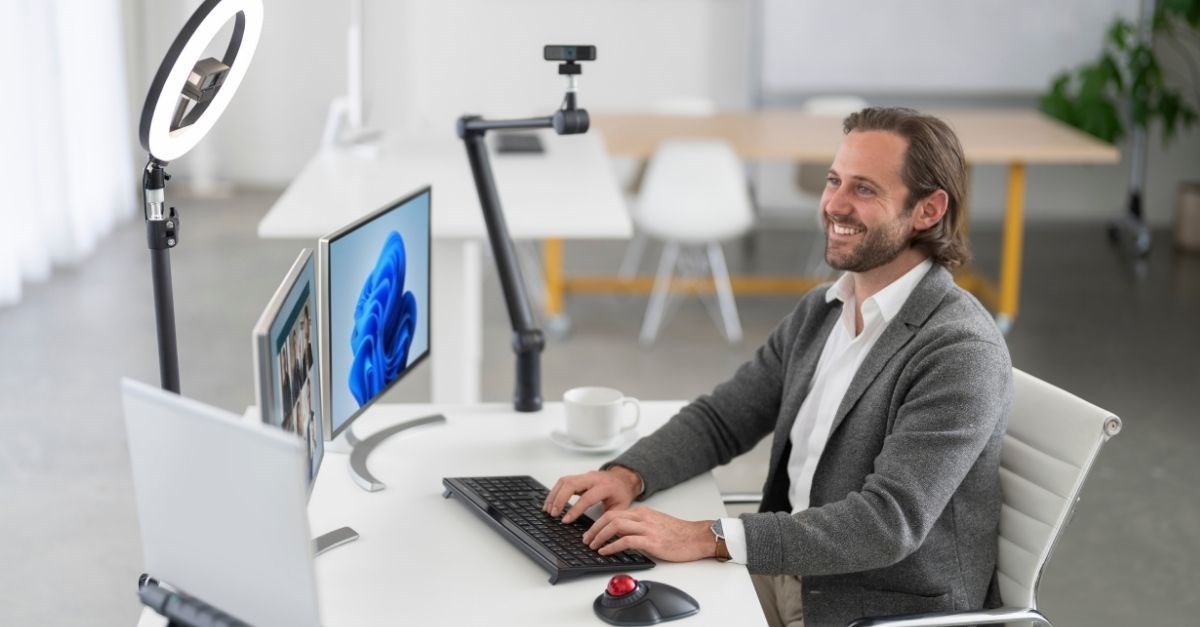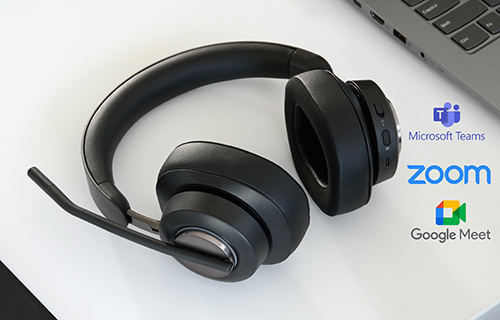
There are 4 ways you can follow video conferencing etiquette:
- Appropriate Eye Contact on Video
- Eye Contact When Not Speaking
- Choose the Right Background
- Mind your Posture and Body Language
Creating a good impression in a video conference, is just as important as doing it in physical one. However, not everyone sees it this way. Here’s where it comes handy to know the proper video conferencing etiquette so you can always look professional in whatever format.
Most of us have been on a video conference call where someone is still in their pajamas, or they are constantly looking at another screen. Perhaps you could visibly see them texting on their phone.
These behaviors are unprofessional. They make you feel like your staff or colleagues are not invested in this video conference with you.
When employees and other staffers break the "unspoken" video conferencing rules, it is easy to be discouraged. Ways to be more professional as the one conducting the meeting is to check that all equipment is working. That includes:
- Webcam
- Speakers
- Microphone
- Ring Light
Also, be on time and prepare what you have to say beforehand. Tidy up your home workspace to avoid visual distractions. Make sure your home office is set up for enhanced productivity while working remotely.
Those are ways to be more professional. Once you've mastered this, it's time to look more professional. Be the leader of always looking professional on video (even when you're not speaking) with these four simple tips.
4 Ways to Follow Video Conferencing Etiquette to Look Professional
Something you must consider is that video conferencing is not easy for everyone. More than 48% of people worry more about how they look while video conferencing than on what they plan to say.
Yet, they do not understand how certain behaviors can be very distracting for the person conducting the meeting and any of the participants. You can help them by remaining engaging.
You can do that by introducing everyone on the call and helping any newcomers with brief instructions on what to expect and proper etiquette. Enable the chat function so people can communicate with you without interrupting.
You can also find the best lighting (or create it with a ring light[1] [2] ). Check what your shot looks like before the video call and get the best angle. Limit distractions. Turn off your phone ringer and let others in the house know you will be on an important video call.
Along with everything listed above, you should:
1. Appropriate Eye Contact on Video
People do not commonly know this but making eye contact on video means looking at the camera. Not at the screen. To have the best engagement with your audience, make sure to speak directly into your camera.
In real life, this is like making eye contact with someone in the audience. During a speech, you want to be looking at the audience you are speaking to, not reading a script off the podium in front of you.
Looking directly into the camera will help your audience feel more engaged with what you are saying. Participants will pay better attention to your message, and you will have more people interact with you during the video call.
Appropriate eye contact makes you more likable and enhances your impact on your audience. Just be careful not to stare. It makes people uncomfortable. Look away at other objects from time to time.
2. Eye Contact When Not Speaking
Make eye contact even while you are not speaking. Eye contact is the most crucial form of nonverbal communication. It is also a sign of respect when you look into someone's eyes. (Again, do not stare because this will make the others uncomfortable.)
Be engaged in the meeting. Acknowledge what people are discussing with head nods, brief comments when appropriate, and most importantly, look at the camera versus a screen to your left or right the entire time.
Furthermore, eye contact when listening conveys:
- Interest in what others are saying
- You are paying attention
- Respect toward the person talking
- Understanding of what is being said
- Closeness and generates trust
- Encouragement through conversation
A lack of eye contact is rude, creates misunderstandings, and causes people start to question you and your level of expertise or authority. It also makes your words less memorable.
3. Choose the Right Background
Clean, minimalist, tidy.
Think of it as inviting your audience into your office. It should be clean, well-lit, and distraction-free to have the most productive meeting. The same applies to video conferencing meetings.
If you have a lot of visual disruptions in the background of your video call, your audience will have a more difficult time concentrating. It can also cause them to be tense.
The human brain needs things to be organized to function optimally. When you create an environment where people cannot focus, they zone out and miss what you are trying to say.
Help your audience feel more comfortable with a professional and clean environment in the background of your video conference call.
4. Mind your Posture and Body Language
Posture and body language need to be considered. Sit back and let your chair support you. Look engaged and use hand movements when appropriate, just like you would in a face-to-face meeting.
That will help drive engagement, and people will understand concepts better. If you were with someone in person but slumped over or looking off to the side, it is hard for them to take you professionally.
Video Conference Calls Should Feel Like a Face-to-Face Meeting
Ultimately, you want to conduct your video conferencing meetings the same as you would as if you were face-to-face with your audience. Walk into the room (or join the meeting room) with confidence, bright eyes, and ready to be productive by incorporating these simple tips.
At Kensington, we understand the changes recent events have brought about and the need for corporations and smaller enterprises to be ready for whatever may come.
That is why we have put together this best practices to help you be more confident and look more professional for video calls.
Looking professional on video is easier with the right tech accessories.
